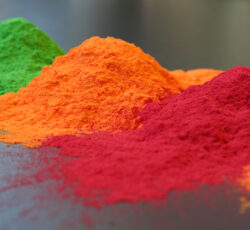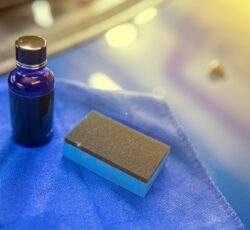Powder Coating vs. Liquid Coating
When it comes to protecting and enhancing the appearance of your products, coating is an essential process. Two popular coating options are powder coating and liquid coating, each with its own set of advantages and disadvantages. In this blog post, we will compare and contrast powder coating and liquid coating, helping you make an informed decision for your coating needs.
 Powder Coating: The Durable and Versatile Option
Powder Coating: The Durable and Versatile Option
Powder coating is a dry finishing process that involves applying a free-flowing, electrostatically charged powder to a surface. The powder is then heated, causing it to melt and flow together, forming a hard and durable finish. Here are some of the key advantages of powder coating:
1. Durability: Powder coating offers exceptional durability and resistance to wear, chipping, and corrosion. The increased thickness of the coating also provides better protection for your products, making them last longer and reducing maintenance costs.
2. Versatility: One of the major advantages of powder coating is its versatility. It can be applied to a wide range of materials, including metal, plastic, and wood. Additionally, it offers a vast array of colors and finishes to choose from, allowing you to customize the appearance of your products.
3. Environmentally Friendly: Powder coating is an environmentally friendly option compared to liquid coating. The process does not involve the use of solvents, which means there are no volatile organic compounds (VOCs) released into the atmosphere. It also produces minimal waste as excess powder can be recycled.
4. Cost-effective: While the initial cost of powder coating equipment may be higher than liquid coating, it offers long-term cost savings. The durability of powder coating reduces the need for frequent repairs and recoating, saving you money in the long run.
However, there are a few drawbacks to consider when it comes to powder coating:
1. Limited Application: Powder coating is not suitable for large or complex shapes, as the powder may not adhere uniformly to intricate surfaces. This limitation can restrict its use in certain industries, such as automotive manufacturing.
2. Difficult Repairs: Unlike liquid coating, where touch-ups and repairs can be easily done, powder coating repairs are more challenging. The entire coating may need to be stripped off and reapplied, which can be time-consuming and costly.
 Liquid Coating: The Easy-to-Apply Option
Liquid Coating: The Easy-to-Apply Option
Liquid coating, also known as wet coating, involves applying a liquid paint or coating solution to a surface using a spray or roller. The liquid is then cured to create a hardened and protective finish. Here are some advantages of liquid coating:
1. Versatility in Application: Liquid coating can be applied to a wide range of surfaces, including metal, plastic, wood, and even concrete. It conforms well to complex shapes and provides a smooth and even finish, making it suitable for intricate or detailed surfaces.
2. Easy Repairs: One of the major advantages of liquid coating is its ease of repairs. Touch-ups and localized repairs can be done without the need to strip off the entire coating, saving time and costs.
3. Cost-effective for Small-scale Application: Liquid coating is a cost-effective option for small-scale coating projects, as it does not require a significant investment in equipment or special facilities.
However, there are a few drawbacks to liquid coating:
1. Lower Durability: Compared to powder coating, liquid coating is generally less durable and more prone to chipping and wear. It may require more frequent recoating and maintenance, increasing long-term costs.
2. Longer Curing Time: Liquid coating usually requires longer curing times, as the liquid needs to evaporate and the paint film needs time to harden. This can lead to longer production times and potentially delay product deliveries.
3. Environmental Concerns: Liquid coating involves the use of solvents, which may release VOCs into the atmosphere. These VOCs contribute to air pollution and can be harmful to human health and the environment.
Conclusion
Ultimately, the choice between powder coating and liquid coating depends on your specific requirements and priorities. And while it may seem like they both have their pros and cons, when you compare them directly you see that powder coating is: Faster curing, more environmentally friendly, less dangerous, quicker, and more efficient overall. Compared side-by-side, powder coating is clearly the better option. For more information on Powder Coating, contact our professionals at Powder Vision Inc. today!
